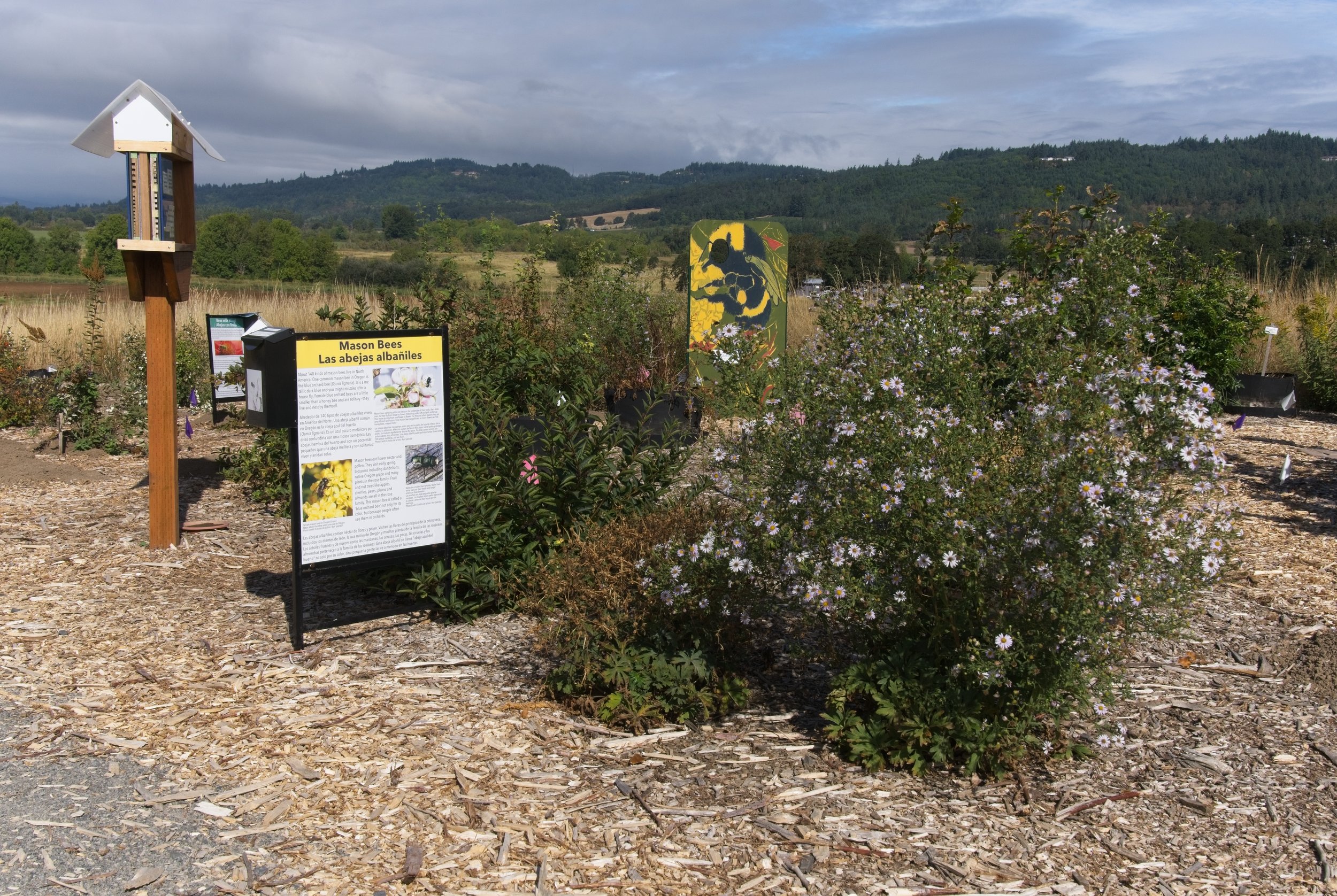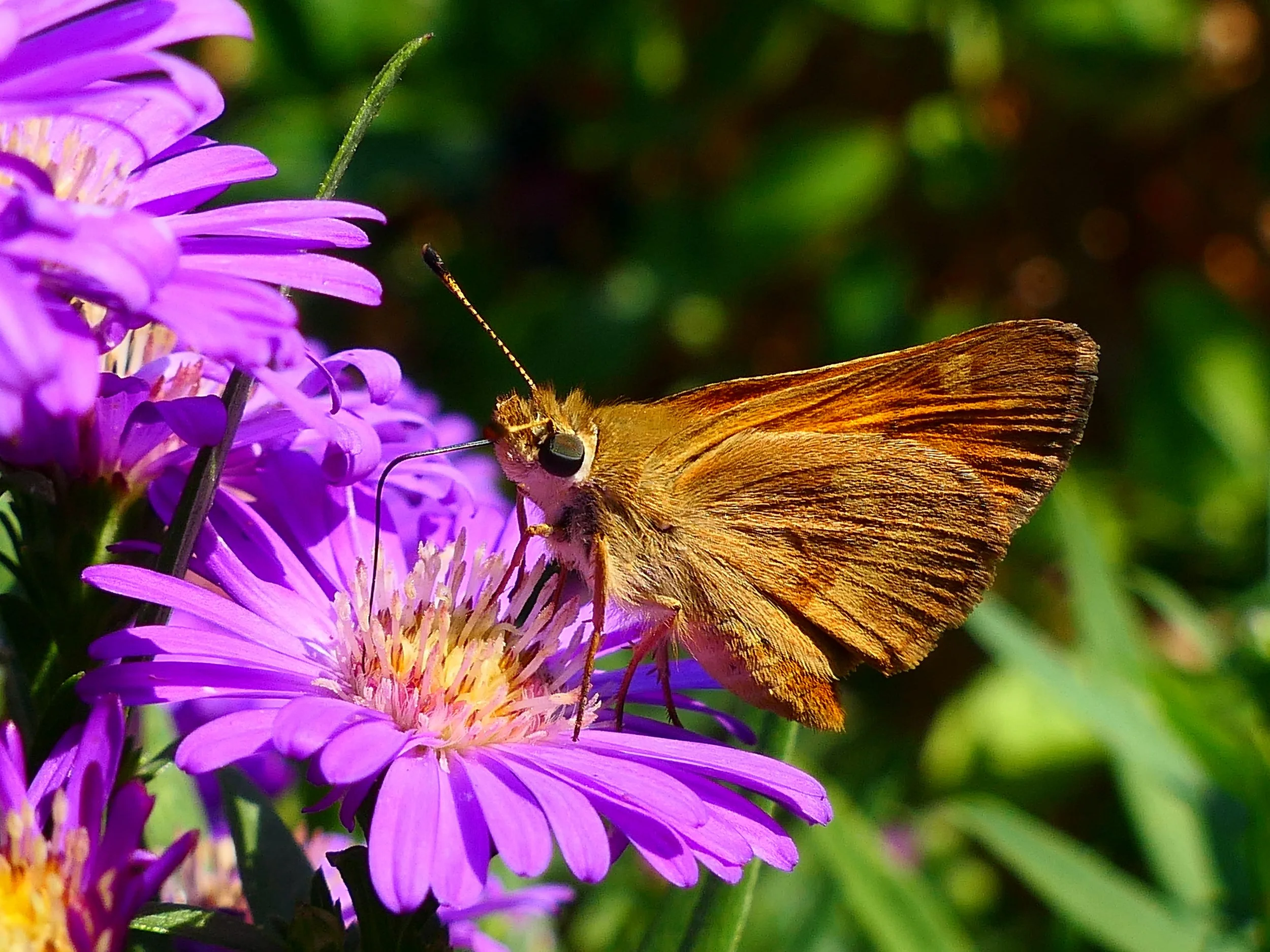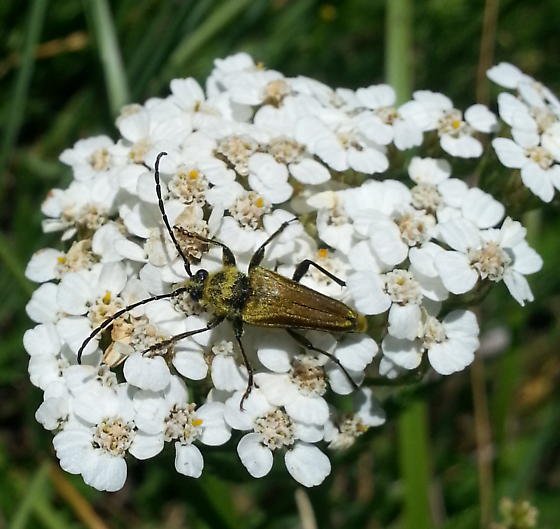
The Nature Center
Pollinator Patch
Discovering Native Plants and Their Pollinators
When you visit the Pollinator Patch at the Ankeny Hill Nature Center in the spring, summer, and fall, you will see many beautiful native plants blooming. You may also see pollinators like native bumblebees, mason bees, butterflies, and even hummingbirds hard at work. They may be sipping nectar from flowers, collecting pollen from flowers, or both.
When pollinators visit the flowers of different plants, they help plants make seeds that may grow into more plants. Many flowers smell good and are colorful. The good smell and colorful blossoms attract pollinators looking for food in the flower’s nectar and pollen.
Flies
Flies-including the tiny midge fly which is the only animal to pollinate cocoa plants-where chocolate comes from!
Butterflies
and moths
During the day and at night these little animals pick up pollen when they stop to sip nectar or lay eggs.
Bats
Most eat insects, but some eat fruit, pollen, and nectar especially in warm climates.
Photo by David Sizemore
Photo by Stephanie Hazen
Photo by Ruth Lathlean
Bees
Bees are among the best pollinators because they fly, quickly from flower to flower.
They are 'sticky' – pollen attaches to their hair.
Photo by Bobbie Allaire
Photo by John Matthews
The different sections of the Pollinator Patch have flowers just right for each pollinator. You can find the flowers you like best and see which pollinators they attract. You can even learn how to plant them in the ground or pots where you live!
In the Pollinator Patch, you can take pictures or play a game by telling a bee from a wasp or a fly! If you are feeling artistic, there are drawing and stenciling activities that you can take home.
Meet the Pollinators!
Whether they have scales, feathers, or hair, pollinators have one thing in common. They need plants, and most plants need them. More than 75% (3 out of 4) of flowering plants rely on pollinators to reproduce. In turn, the small animals known as pollinators rely on plants for food, shelter, nest materials, and nest sites.
Photo by Franco Folini
Photo by Rob Irwin
Bees
They feed on flower nectar and pollen.
They have specialized jaws, mouths, tongues, and other body parts to eat and collect nectar and pollen.
Photo by Bobbie Allaire
Birds
Birds-like hummingbirds with beaks and tongues that allow them to sip nectar from certain flowers.
Wasps
Normally wasps eat meat but when they want quick energy, they may sip nectar from flowers and pollen may stick to them.
Beetles
The most ancient of pollinators. They were around when dinosaurs walked the earth.
Busy Builders and Prolific Pollinators
Mason Bees
Information courtesy of the U.S. Forest Service
Beatriz Moisset and Vicki Wojcik, Pollinator Partnership “
Many bees are very good at pollinating. But one such bee, the Mason bee (species Osmia), is so good that it is also known as the blue orchard bee because they are known for visiting fruit trees, such as apples, plums, pears, almonds, and peaches. When building their nests, mason bees use clay to make partitions and seal the entrance. This unique mud-building behavior leads to their common designation as masons.
Blue orchard bees are about the same size as a honeybees, but a few key points help you tell them apart. Blue orchard bees are a dark metallic blue, not striped brown and orange like the honeybee. If you pay attention to where they carry their pollen, you can also easily tell apart masons and other leaf cutters from honeybees – honeybees carry round pollen balls on their hind legs.
Masons are solitary, like most native bees. This means each one tends to its own brood instead of having a queen and worker bees. However, they seem to like the company of others of their kind and happily build their nests next to each other. They also readily accept the hollow tubes provided by the orchard grower for this purpose. This proves to be very beneficial to the fruit tree grower because it makes managing this valuable orchard helper easy.
Not only commercial fruit growers, but home gardeners also have the opportunity to have some orchard bees in their own gardens by placing hand-made or store-bought bee houses or bee blocks in their yards.
The mason bee season is in early spring. Once they emerge, they promptly mate, search for empty holes that are the right size and shape, and go to work stocking their nests. The favorite food for their brood is fruit tree pollen, plus some of their nectar. Females collect this food, bring it to their nests, and knead it into a ball, mixing it with nectar and their own saliva. Once they have a food store that is big enough, they lay an egg on top of this mass and seal off the chamber or cell. Afterward, they build a little mud wall and gather food for the subsequent cell. They work this way until there are five to eight cells, each with food and one egg. The larvae grow and, by the end of summer, metamorphose into pupae and adults, which remain safe and sound inside the nest until the new generation emerges the next spring, usually in perfect timing with the blooming peach or apple trees.
Adobe Stock Photo-licensed
Photographs by Bobbie Allaire
Many bilingual signs (English-Spanish) inform visitors and provide location-specific activities. The Mason Bee tube house gives the bees a safe place while providing Patch visitors a glimpse at their nesting habits.
A Mason Bee is covered with pollen as it works on a blossom.












